Estimated reading time: 30 minutes.
May/2017 – The EOS M5 is the closest Canon ever got to deliver a mirrorless camera with the same quality of its larger DSLRs. A lineup that for four years refused to 1) compete head-to-head with its peers on the market and/or 2) be an alternative to larger EOS cameras, the 2016 M5 is finally the camera that brings on a portable package, two highlights that keeps Canon’s DLSR at the top: the well thought out ergonomics, with buttons and dials within fingers reach; and the trustworthy auto focus performance, fast and precise, no matter the situation. Although small, the M5 doesn’t stand it time, introducing never before seen functions to the EOS line: a new 25.8MP APS-C sensor, 24.2MP used for photos, and rest used for the new electronic stabilizer, used during video capture; a new DIGIC7 processor, faster to render the Live View and process the Dual Pixel sensor data; up to 9 frames per second during Live View, ready for action shooting; an integrated OLED electronic viewfinder, an accessory to the EOS M3; and the new Bluetooth LE connectivity, for always-on wireless networking, for new styles of shooting. A camera that tries to please amateurs and professionals, for US$979 body-only the EOS M5 is quite expensive next to the US$1099 EOS 80D, or its contemporary Sony A6300, with 4K video at just US$899; both more capable that the M5, that also uses a very limited EF-M mount (it’s US$199 more for an EF/EF-S adapter). But is it worth paying extra, just for a portable EOS experience? Let’s find out! Nice reading.
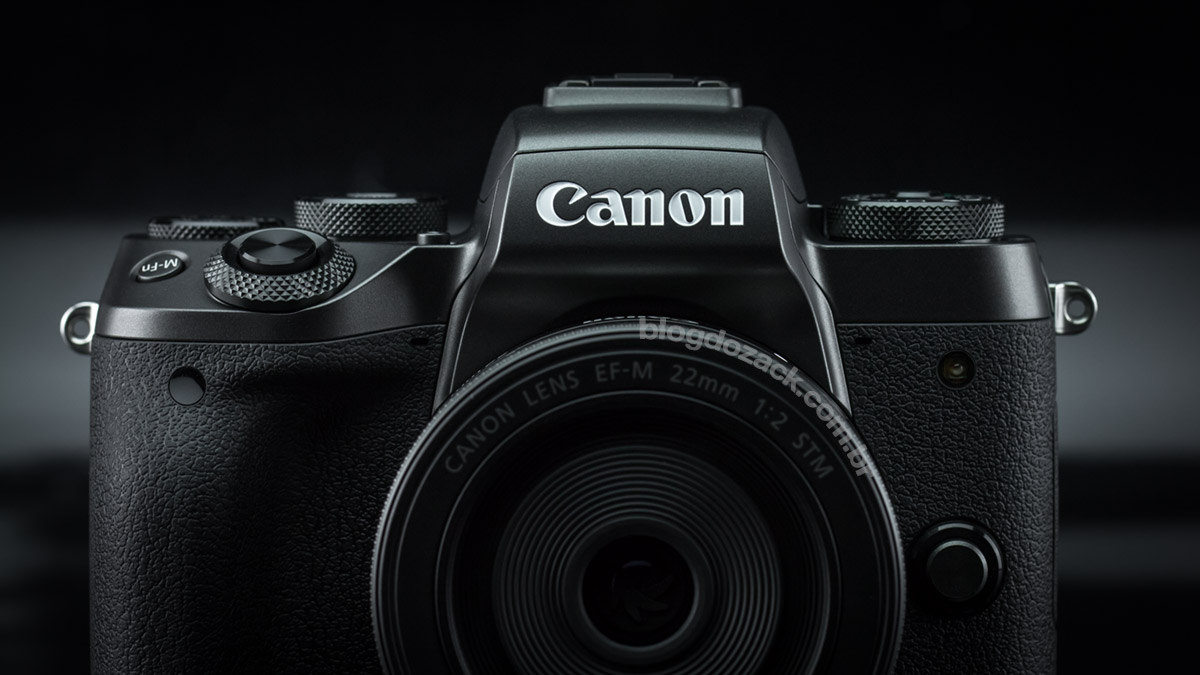
At just 11.2 x 8.8 x 6.2cm of 428g of mostly plastics, except for some metal dials, unfortunately the first thing we notice on the new EOS M5 is how poorly built it is; very hard to recommend after the Fuji X-Pro 2, X-T2 and Sony A6300/A6500 reviews (some more expensive, some cheaper than the M5). Really, it saddens me to say so early on a review, but the EOS M5 is one of the worst built cameras we’ve ever seen on blog do zack; comparable only to the Fujifilm X-A2, a plastic-fantastic wonder worth just US$549 (with lens kit). With plastic panels on the top, bottom, rear and front, the EOS M5 makes plasticy noises when you press it, poorly put together with wobbly dials and buttons; atrocious compared to the all-metal 2011 EOS M. Although other reviewers have been mistaking it with an all-metal build, don’t let them fool you: the M5 all-plastic build is a long step back past EOS Ms or any Canon DSLR; absolutely atrocious for the price.
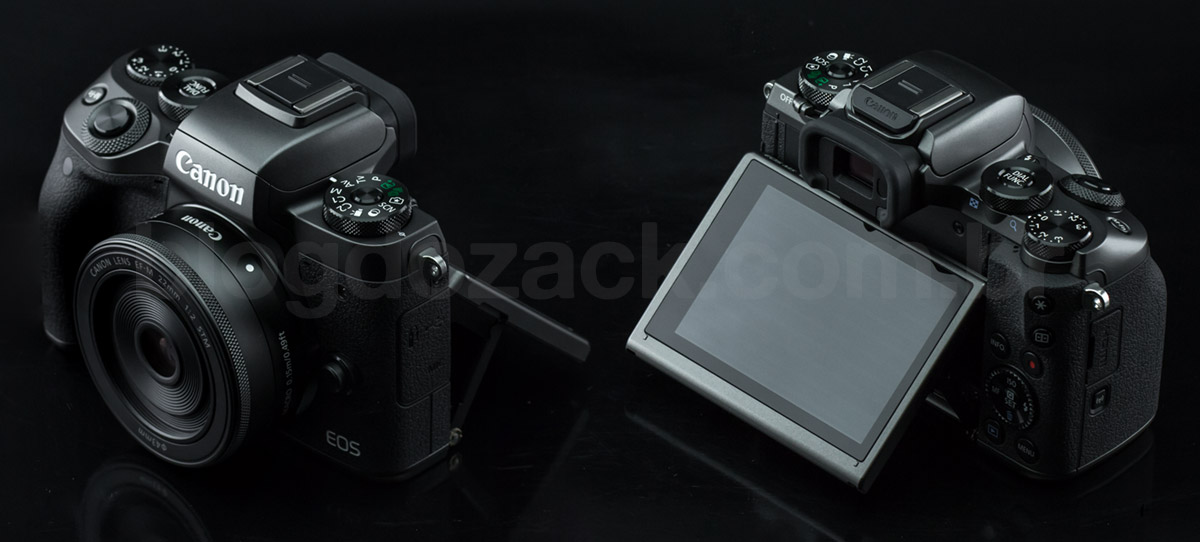
After the shock of paying about US$1000 for a camera mostly made of plastic, at least the ergonomics are EOS worthy, and the high point of the M5; certainly a highlight on the ever so saturated mirrorless market. In your hands the M5 is practically a mini-EOS DSLR, with dials and buttons on all the expected places, with a generous right hand grip supporting all your fingers, just like the also “tall” bodied Fuji X-T2; much better than the tiny Sony A6#00 series. Your index finger precisely sits on an angled shutter release button, smooth and nice to the touch, unfortunately with two very sensitive stages: one for focusing, and another to take the picture, sometimes firing by accident. Impressively the diminutive M5 keeps Canon’s EOS main front dial: it controls the aperture during Av, and shutter speed in Tv, around the shutter release, also at an angle. It’s much faster than Fuji’s “hidden” X-Pro2/T2 dials, or the complete lack of frontal dial on Sony A6#00 series.
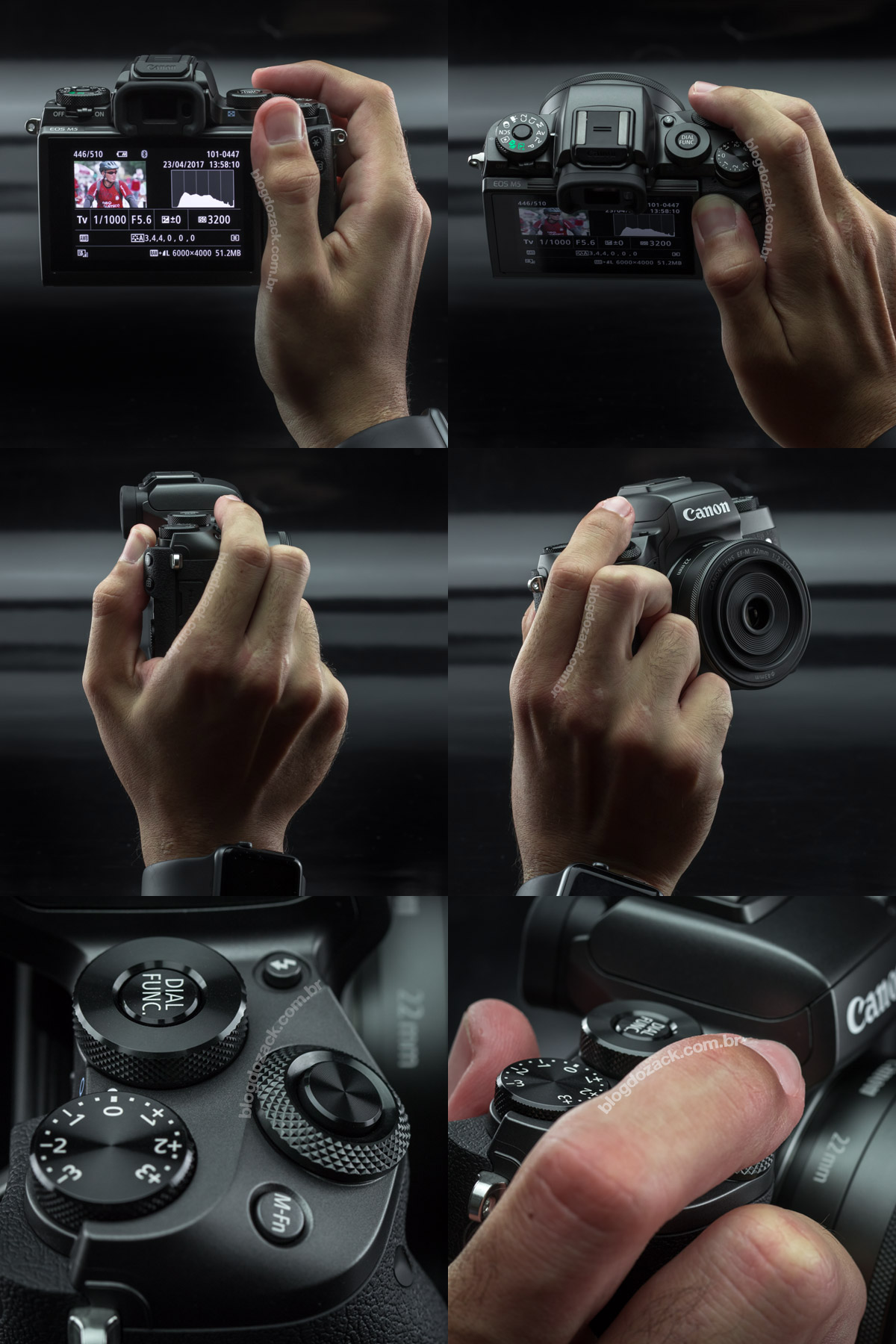
Although familiar, the M5 brings new controls to the EOS line. The highlight is the DIAL FUNC. button/dial; never seen before on an EOS camera and borrowed from Canon’s Powershot line. Do you know the row of buttons (ISO/WB, AF/DRIVE, metering) found on top of larger EOS cameras, next to the top information LCD? The DIAL FUNC. takes the place of all that, with a single dial + button interface that cycle options on the camera’s main LCD, all with a dedicated dial. It comes factory set to just WB and ISO (and I prefer it that way), but you can add metering, AF and DRIVE, for practically the same usability found of larger EOSs. It’s so useful I question why Canon doesn’t implement it across the whole EOS lineup (the Rebels would greatly benefit from it). The EOS M5 is a Frankenstein of buttons and controls, that adapts to various styles of work. I’m almost forgetting how poorly built it is… No, wait, that nightmare keeps coming back!
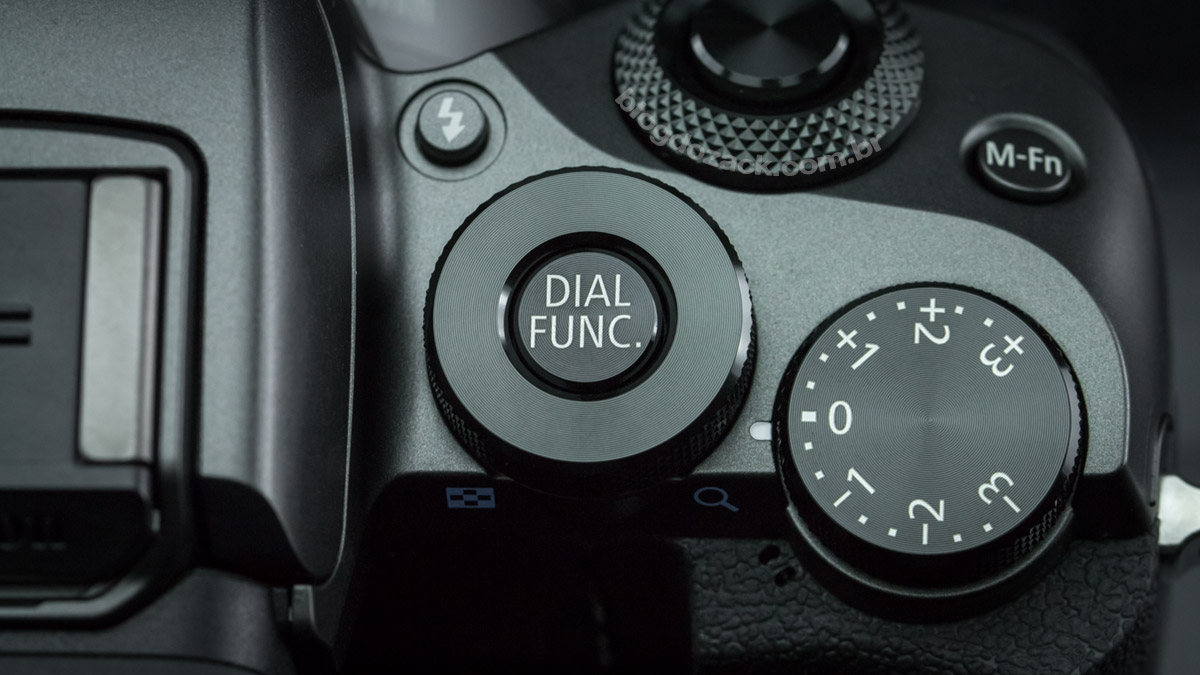
Still on the right hand side, the EOS M5 borrows another Powershot button: a dedicated exposure compensation dial, ready to mess with old time EOS shooters. On larger Canon DSLRs, the exposure compensation is made through the rear thumb dial, spinning right/left for plus/minus compensations; very intuitive. But on the M5, the rear thumb dial doesn’t do anything, and you must use the top dial to compensate, far from finger’s reach. :-( Also, as you noticed, there is a rear thumb dial on the M5, tiny, thin and uncomfortable, but sporting a four directional control + central SET; again, way more practical than the T6i/T7i “T” button layout. Canon really outdone itself on the EOS M5 ergonomics, impressively engineering many types of controls on a very portable camera. I could even complain it’s complicated to use, but I’ll leave such conclusion to you.
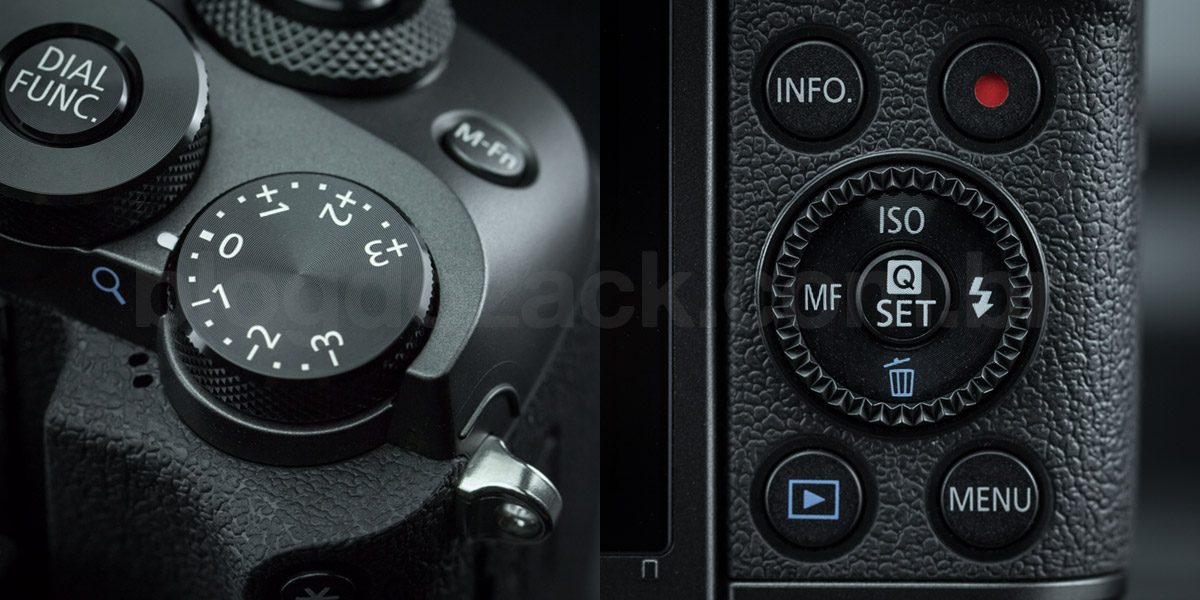
In order to keep the camera small, Canon maintained all the buttons to the right hand side; not growing the body to the sides. MENU, playback, INFO and REC buttons all surround the rear dial, with added “*” and “+” buttons behind the rear thumb grip; all comfortable to use, not bending your finger. Like every Canon EOS, you can set the * button to operate just the AF, thing that should come factory set in all Canon camera; everyone uses it that way. The “+” button is exclusive for focusing operations, and on this “100% Live View camera” it engages different controls: it’s possible to adjust the focusing area, center it or to give it magnification (5x – 10x), all within thumbs reach; faster than the classic EOS M touchscreen. Also at the top there’s a M-Fn button, programmable to various functions. And as incredible as it seems, there’s also an “aperture preview” frontal button, impressive on such a portable camera; also customizable. Last but not least there’s a flash release button, a thing Canon refuses to implement in all full frame DSLRs but found it’s place on the M5, with a guide number of 5. However it’s very software limited, lacking any wireless settings.
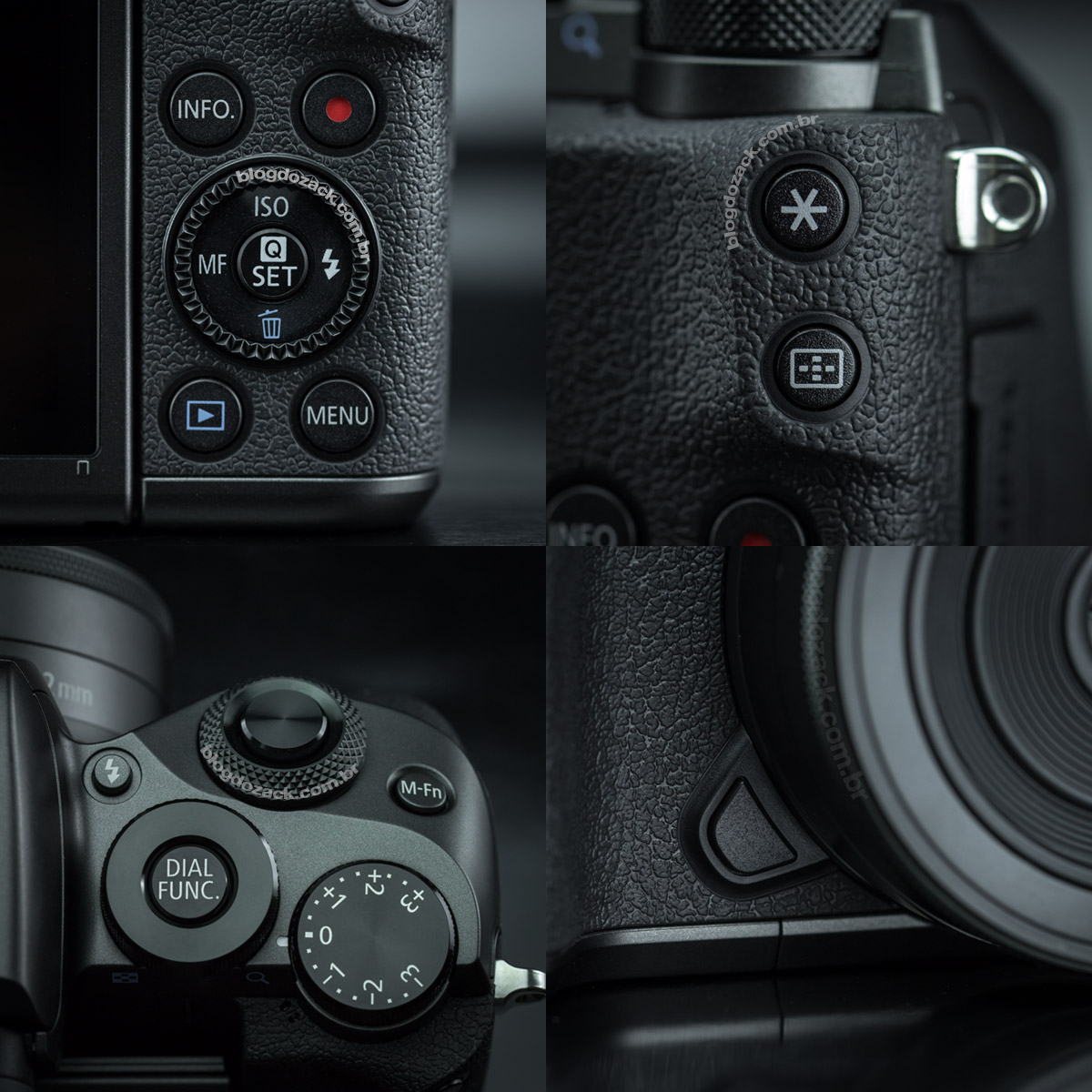
To the left, at the top, Canon dedicates the EOS M5 to a single MODE dial. As well built as the exposure compensation dial (they’re both really nice, it will suit both amateurs and professionals: there’s the standard PTAM positions for for manual and semi-automatic modes; there’s two custom C1 and C2 slots, surprising given the flexibility – given other major software limitations – and another thing no Rebel offers; two auto modes, one for photos and another “hybrid” for photos and videos; plus a creative HDR, scene and dedicated video mode; with a last “star icon” position, that activates what Canon calls “Creative Assist”. That’s actually the most interesting one, because it demonstrates Canon’s goodwill thinking for amateurs starting wth a larger sensor camera. Instead of “f/stop” or “shutter speed” adjustments, two graphic sliders adjust “background blur” and “scene brightness”; weird for professionals, but great for amateurs wanting more controls.
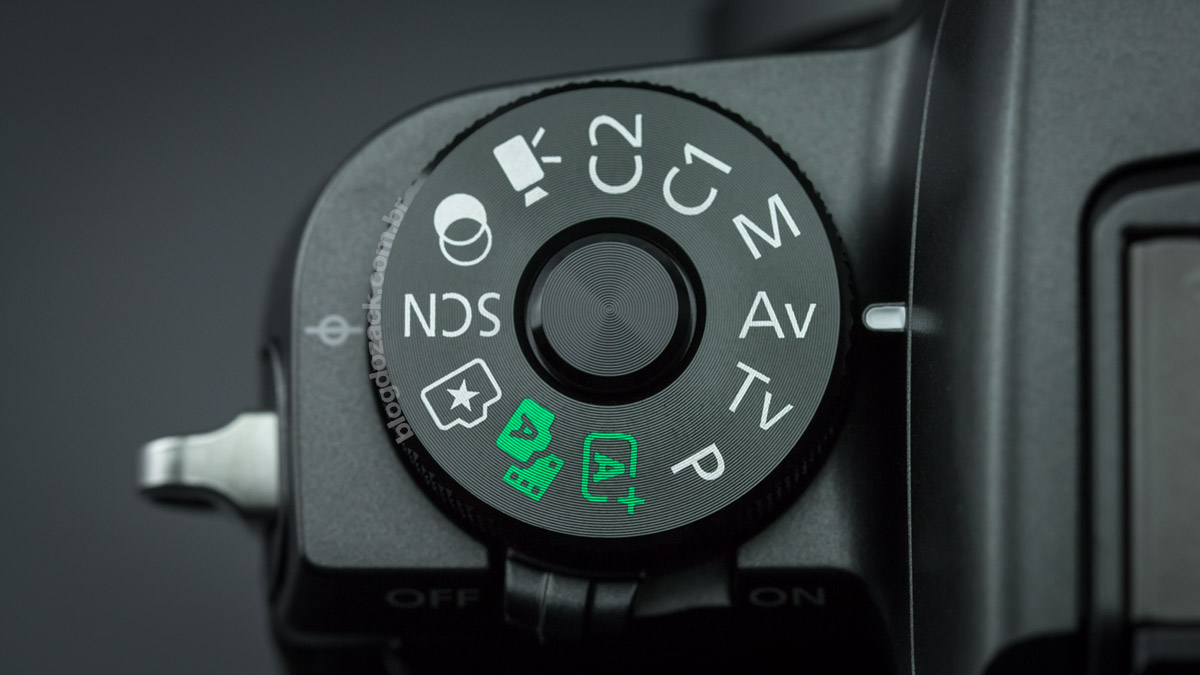
On the sides, Canon let the ergonomics (and the logic) slips; both awful for 2016. To the camera’s left there are data ports: USB2.0 (yes, 2.0 and it can’t charge the battery); remote (?) and microphone input; all behind a flimsy rubber piece, ready to break within six months of use. As yes, you read that right: “MIC IN”, but no headphones OUT, just like Sony’s A6300/A6500. While I understood Sony’s recycling of the A6#00 platform, not implementing the OUT port after three generations, for Canon to leave it out of the M5 is just ridiculous. And, y-e-s, you read that right again: those are the only ports on this side! The HDMI port is on the right side, under the right hand grip, impossible to use the HDMI port for, let me think, hook the M5 to an external video recorder, for high quality captures? Indeed there’s not even an uncompressed feed from this port, only the good ol’ overlaid rendering. To sum it up: it lacks ports, they’re spread on both sides, and they won’t do what we expect them to do in 2016. Can you believe Canon charging US$1000 for the EOS M5? For anything serious, this is not the camera for you.
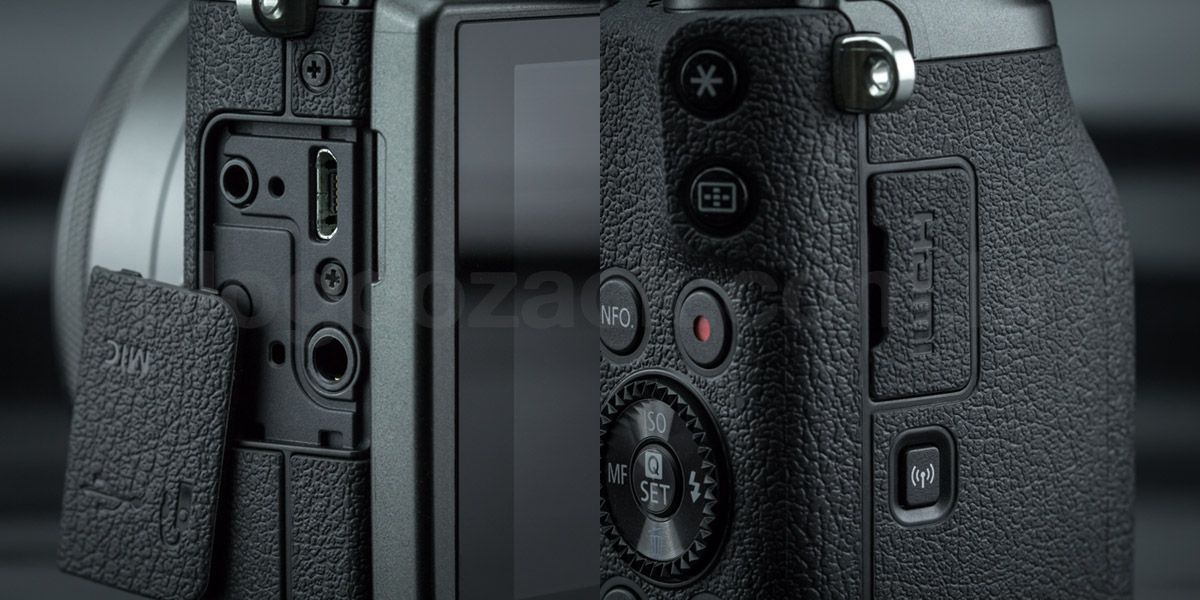
Finally underneath, the EOS M5 accepts the LP-E17 batteries and the SDXC memory cards, with UHS-I support. Both fit underneath the worst battery compartment door of all times: long, shallow, plastic-y and extremely wobbly; all without rubber sealing. As this door is long, the swiveling mechanism is flimsy, with a thin aluminum structure, that wobbles 1) when open and 2) worse, even when locked in place. To make matters worse, it’s also designed integrated to the camera’s corners/grip, ready to break at first impact; unacceptable for a product we should want to carry with us at all times. I know it seems nitpicking, but in times when even the simplest smartphone sports a metal frame, made for heavy everyday usage, I can’t believe Canon is charging us US$1000 for such a flimsy product; the 2011 EOS M definitely didn’t feel so cheap. On a positive note, the M5 battery is shared by the T6i/T6s DSLR, nice to have them on the same kit. However the battery is rated at just 350 clicks, varying with the LCD/EVF/flash usage, so plan to carry extra batteries with you. And the SDXC UHS-I memory card performance… I’ll talk about it on a dedicated paragraph.
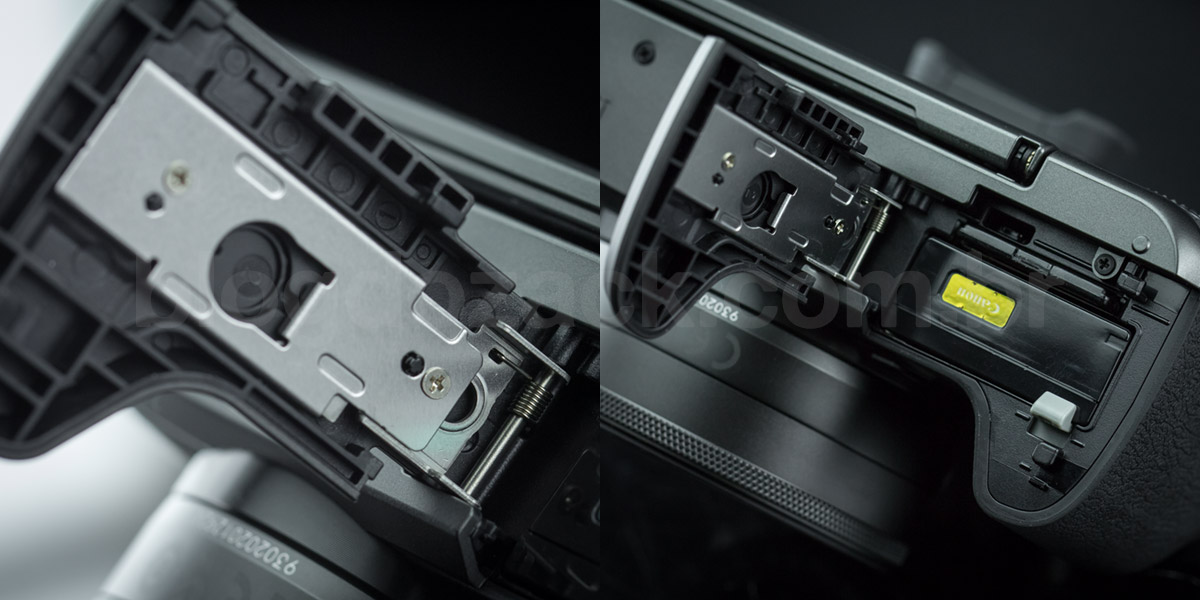
The EOS M5 leaves a bad taste on those who bit Canon’s mirrorless cake. I know it seems nitpicking (or bitching) about the camera’s build, but I solely blame canon: we’re in 2016 and the M5 should be a showcase of its build quality and ergonomics; we’re certainly paying for it and we receive it on much simpler cameras. But they fail to deliver the very minimum expected from a 2016 camera, and it’s hard to recommend it 1) for pros, who would want a portable EOS as a backup camera and 2) amateurs, who are expecting the best experience from the premium price. What Canon does well is the ergonomics: an excess of flexible controls, fast and intuitive (after a while) dials, adapting to many work styles; by far the closest ever to a mirrorless DSLR, and a pleasure to use. But the flimsy buttons… The wobbly dials… The poorly constructed doors… Canon did everything possible to make me not want to use the M5, and they charged me US$1000 for it. What a shame, Canon!
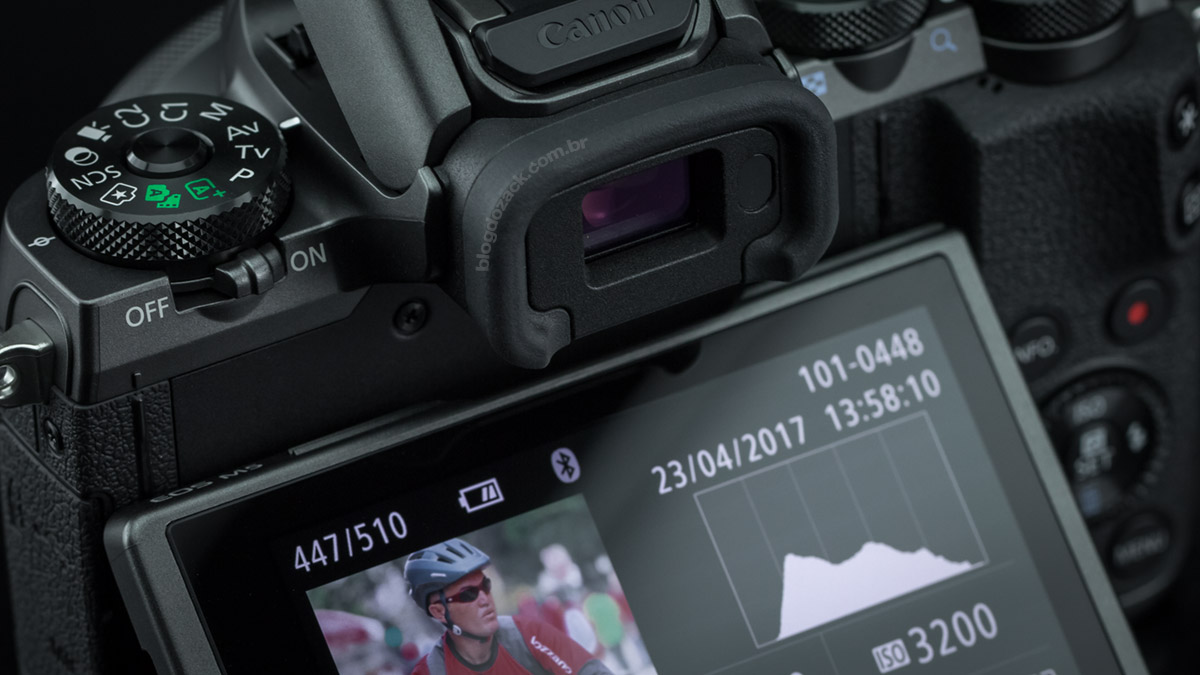
At the rear, the EOS M5 is dominated by the touch sensitive 3:2 3.2” 1.62M dots LCD screen. And despite the EOS M5 structural “savings”, this is one of the best LCD screens we’ve ever seen on a mirrorless camera. The pixel count is nearly double the A6500, a camera that most of you love; it also have 60% more pixels than the Fuji X-T2; and at the same level only of the Fuji X-Pro 2 or Canon’s own top-of-the-line 5D Mark IV; both costing US$1699 and US$3499 respectively. I could even argue Canon shares the same panel as the Mark IV, so similarly they render images. But differently from the 5D series, the M5 screen swivels 85º up, to be used at waist level; or up to 180º down, effectively turning to the front, made solely selfies. As it won’t fix a tripod (the screen turns down), it’s just for selfies and not for videos (sorry, YouTubers). But the panel structure seems robust (yay!), much less wobbly than Fuji’s X-A2. And while the A6300/A6500 16:9 panel turn your photos into stamp size memories, the M5 3:2 panels brilliantly keeps the 5D Mark IV “immersive” experience, including the all-sensitive touch menus; take notes, Sony A6500!
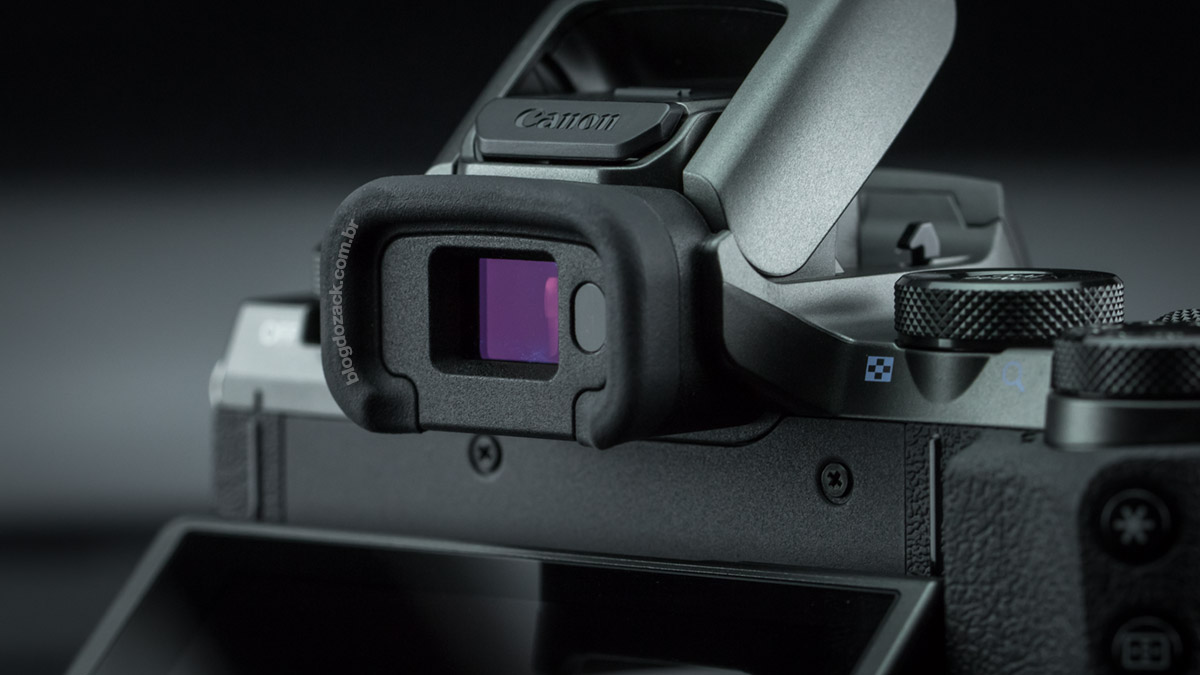
At the center top, the M5 is the first EOS mirrorless to sport an electronic viewfinder (EVF), whereas the classic 2011 M was limited to the LCD only; and the M3 supported it only as an accessory. Distinct from a DSLR, which reflects the lens image on an optical prism using mirrors, on this mirror-less camera the image is electronically rendered on a 2.36M OLED screen, standard for the mirrorless market. But on the M5, Canon used a measly 0.62x optical magnification, much smaller than Sony’s A6300/A6500 0.7x; and tiny compared to the market leading (and fantastic) 0.77x EVF found on Fuji’s X-T2. Not only being small, this OLED color and gamma profile are mysteriously different from the rest of the market, overly saturated and contrast heavy; unexplainable from a brand so careful with its color science. If I complaint about every single Sony “electronic” EVF experience, far from reality, the Canon’s EOS M5 EVF in an invitation to an acid trip! It’s delirious to point the camera at the sunset and be served with neon pinks skies and orange clouds, that also don’t match the JPEG color profile; “muted” by default. You look at an overly saturated image in the EVF, but get served to a boring JPEG. On the other hand, the EVF motion rendering is almost moiré and aliasing free, showcasing Canon’s DIGIC7 prowess over Sony’s aging BIONZ X, paired with a smooth 120Hz refresh rate hidden in the “Display priority: Smooth” menu setting.

Also the auto LCD/EVF switching feels weird for 2016’s standards. First there’s a noticeable lag between the sensor deactivating the LCD and the OLED screen activation; with good 1-2 seconds with no image on both displays; u-n-a-c-c-e-p-t-a-b-l-e! If the camera is completely shutdown, OMG, it takes about three, four seconds for anything to show up on the EVF: you turn the camera ON, look inside the viewfinder, the M5 shuts the LCD off, and it takes a while to display anything on the OLED; is just awful. Second, the M5 can’t detect when the LCD is in use, to smart fully shutdown the proximity sensor; more than once I was using the LCD, and it shut off next to my clothes (with the camera at waist level). The Sony A6500 can auto-sense when the LCD screen is out of the “flushed” position, and deactivates the EVF/LCD sensor; very neat! These are issues worth noticing on a US$1000 2016 camera, that should behave like its market’s peers.

Despite being my first camera with a DIGIC7 processor, the EOS M5 doesn’t really push it’s operational speed ahead. I can’t say if it’s Canon’s sluggish software design, or pure mirrorless inexperience, but just like the 2011 DIGIC4 EOS M, the 2016 DIGIC7 M5 takes good three seconds to boot; on the same class as Sony’s A6300/A6500 – and that’s not a compliment -, far from Fuji’s 0.5s X-Pro 2 and X-T2 booting time. So at any decisive moment, if the camera is off, forget about capturing the moment; the EOS M5 just won’t boot it time. After it’s on, it kinds of work reasonably well: there’s a “nano delay” to activate the MENU; a “nano delay” to actually capture the picture, even with the focus locked or during manual focus (probably due to all-mechanical shutter used on both curtains); and the picture playback takes about two seconds to load. Yes, two seconds to activate the playback! There’s no sense of urgency on the EOS M5, besides the new DIGIC7.
In continuous drive mode, however, the M5 is de facto the fastest Canon mirrorless ever. Actually it’s the fastest Canon “Live View” EOS of all times, including the top of the line 5D Mark IV, that took the Live View mode seriously. The M5 runs at up to 7 frames per second with SERVO AF and auto exposure combined, or up to 9 frames per second when you deactivate the AF; all thanks to the new DIGIC7. Whilst there’s no menu adjustment for either the 9 fps or 7 fps (like Sony’s Hi and Hi+ modes), when you set the camera to manual focus only it’s noticeably faster. It doesn’t touch Sony’s A6300/A6500 11fps with auto focus, but it’s an extra flexibility on the M5. The buffer capacity of for just 18 raw + JPEG files (the same as the 80D) that, again, is nothing compared to the A6300 (22) or the amazing A6500 (117). And the SD card BUS is still UHS-I, limited to only 104MB/s, not compatible with the newer 312MB/s UHS-II protocol (not to be confused with UHS-1, 2 and 3). So we’re talking about “last year’s” tech at the very minimum, not comparable to Fuji’s X-Pro 2 and X-T2 UHS-II implementation, nor Sony’s vast 100-raw A6500 buffer.
In practice the EOS M5 is the same as any Rebel EOS camera to shoot action; a that’s a huge disappointment for 2016. While the A6500 could fill the buffer with over 10 seconds of 11fps raw files, the M5 is too easy stop shooting due to a full buffer; and the long write times it takes to flush the files to the SD card. This takes away most of the advantage of the new Dual Pixel SERVO (more about it next), as the memory workflow isn’t enough to keep up with action. Also, during continuous shooting drive the LCD/EVF displays only the last picture taken, that sort of gives an impression of movement, but it’s not the same as the “real” Live View found on both Sonys. It’s stubborn from Canon not to deliver a “cheap” DSLR alternative with the EOS M system, that can’t really compete with its market’s peers. While Sony Alpha A6000, A6300 and A6500 were actually conceived to compete with the top-of-the-line Canon APS-C EOS 7D Mark II (and even surpass it on the 6500), Canon can’t deliver the same level of performance on the 2016 EOS M5.
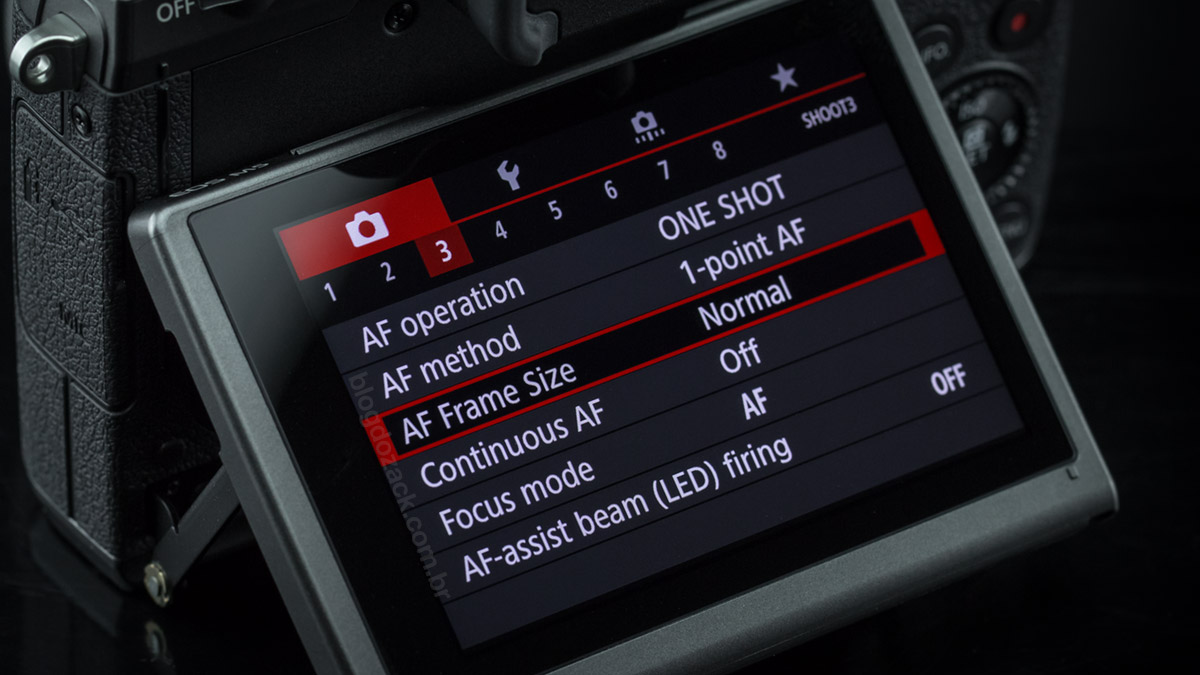
Done with build, usability and interfaces, the EOS M5 biggest headline is certainly its Dual Pixel sensor. A Canon technology introduced on the 2013 EOS 70D, the idea is to use two photocells on every pixel of the image sensor (hence the name), effectively making it sensitive to distance; the same principle used on phase-detection modules used under the optical viewfinder/mirror of DSLRs, with ultra fast AF performance. On the EOS M5, Canon dedicated 80% of the frame to 49 “points’, with up to -1EV sensibility (less sensitive than the -4EV 5D Mark IV), but ahead of any Sony A6300/A6500 (0EV). And the results are promising: the EOS M5 is by far the fastest focusing mirrorless camera on the market, at the same class of most DSLRs or even better; at least in “single” shot mode. But in SERVO AF it looses its grip, lagging behind Sony’s 4D Focus.

Although largely dependent on the lens used, the EOS M5 AF performance is fantastic. On single mode, here tested with the vintage EF 35mm f/1.4L USM adapted via Canon EF-M/EF adapter, the AF doesn’t just works; it instantly locks! It’s impressive to change your subject in the scene or to compensate for the composition (using the focus&recompose technique. It’s totally dependable and practical, as we’re used to on every DSLR: if the subject falls behind an AF point, the camera just locks on it. The sensitivity and precision are also class leading at up to -1EV, and the EOS M5 is impressive even with low contrast subjects, like plain T-shirts or smooth surfaces (think about a car’s paint). It’s on a league of its own, pushing the EOS M5 to the top of the mirrorless market.

However in SERVO AF, the EOS M5 let us down in performance; even lagging behind previous generation Dual Pixel cameras. The DIGIC6 EOS 80D was the first camera to implement a SERVO mode during Live View, with lower than expected focusing rate. The DIGIC6+ EOS 5D Mark IV took the Dual Pixel ahead with up to 7fps or 4fps, based on focusing priorities; greatly enhancing it’s focusing rate. But on the DIGIC7 EOS M5 Canon promises up to 7fps with predictive focusing that, honesty, just doesn’t work. Not only the camera looses the subject often, as badly as Sony’s A6300/A6500 system, but the lack of an RGB+IR metering module makes it near impossible to auto select the subject and follow it; even in manual AF-point it fails to follow the subject over time. You select the focusing point, point at the subject… And the camera can’t keep up with it, clearly focusing behind the point. It’s completely useless even for simple situations.

“Eyewear” with the EOS M5 + EF 70-300mm f/4.5-5.6 DO IS USM f/5.6 1/1000 ISO1250 @ 300mm.
For area changing, Canon borrows some of the Micro Four Thirds camera’s clever ideas. As the EOS M5 is small and lacks a rear, thumb joystick like larger 7D, 5D cameras, it makes due with a “virtual thumb stick” on the rear LCD panel itself, as it’s touch sensitive. When at eye level, using the EVF and with the LCD backlight off, it’s possible to drag your finger on the screen and move the AF point even when the LCD is shutdown; just like a laptop trackpad! It’s possible to adjust which LCD area will be active (the whole screen, a 1/2 left/side area or a 1/4), in order to prevent activating the screen with your nose or to use the EVF with the left eye; and it’s also possible to set two input speeds, for faster or more precise adjustments.

And it works surprisingly well! While on the A6500 review I showed how a similar idea was awfully implemented on a laggy, precision-less LCD panel, on the EOS M5 Canon made it all work beautifully. It’s impressive how fluidly the AF point follows your finger’s input, and yet another function even the EOS Rebels would benefit from (as they lack a rear thumb joystick as well); hell, even larger EOS cameras could use it (the 5D III/IV have astonishing 61 selectable AF-points). Paired to the M5 “+” button on the camera’s rear grip, it’s super fast to switch the focusing area size (normal and small); zooming in the AF area, almost instantly; or even completely disable the AF, pressing the MF button. It’s tiny ergonomic decisions (who would implement a MF button on a camera?), that makes all the difference when it’s time to shoot.
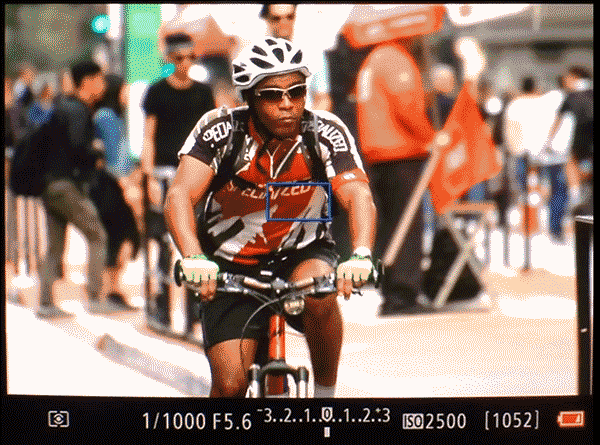

“Specialized” with the EOS M5 + EF 70-300mm f/4.5-5.6 DO IS USM f/5.6 1/1000 ISO2500 @ 300mm.
(IMHO) That brings us to the question: can I recommend the EOS M5 for action photography? Nope. Canon indeed have a brilliant technology in its hand, in the form of a third generation Dual Pixel + DIGIC7 processor, that together solve the biggest problem from every mirrorless camera (or even the DSLRs Live View mode): the AF speed and SERVO mode. In single mode, Canon is definitely at top: with top-of-the-line lenses, mostly USM models (including the new NANO USM), a Dual Pixel capable camera instantly locks focus every. Single. Time! But for continuous shooting, that Canon calls SERVO, it just can’t compete with Sony’s new-kid-on-the-block 4D Focus. The A6300/A6500 cameras, although far from perfect, with much simpler technologies, are much more dependable than Canon’s own SERVO Dual Pixel; for now. While I can recommend it for some situations, as long as you manually select the focusing area (avoid “wide area” at all times) and manually keep track of your subject, it just can’t compete with even the most basic Canons EOS DSLR.
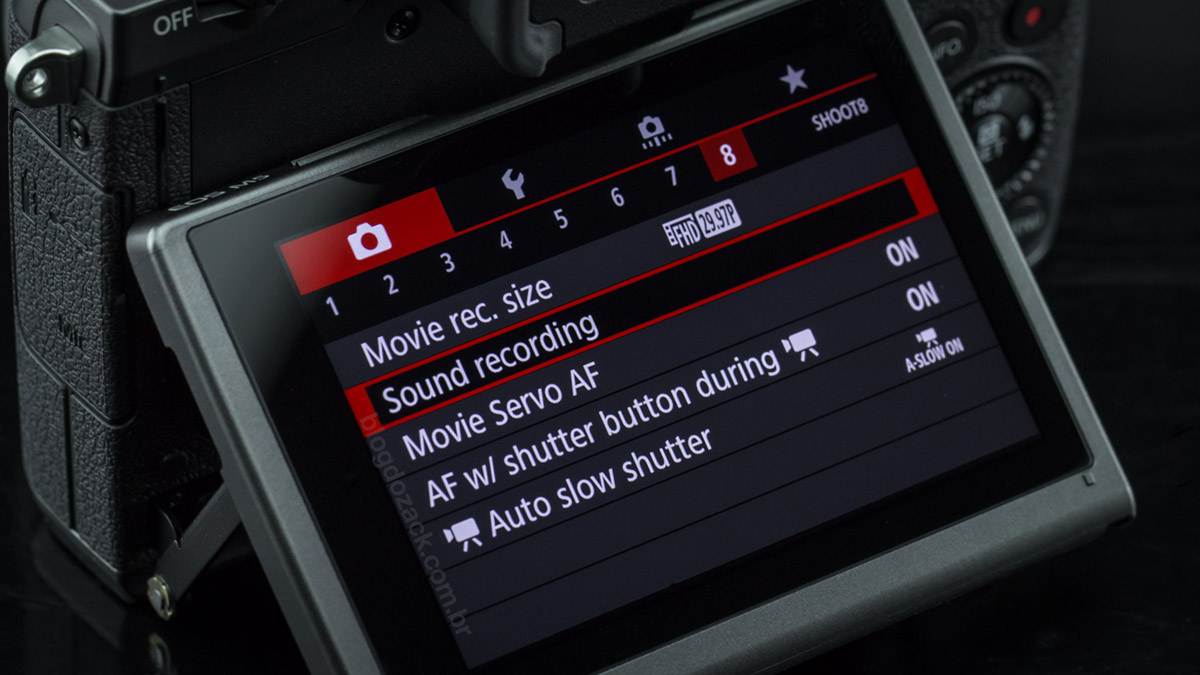
100% crop, the M5 1080P video quality if far from what’s possible from 1920×1080 pixels.As standard in every EOS camera (except the ultra expensive Cinema lineup), the EOS Movie mode, dedicated for video capture, comes weirdly implemented on the EOS M5. Still not 4K, still limited via software and with overall questionable image quality. Or maybe not! Actually the EOS M5 is a curious mix of functions and “innovations”, that we don’t get even on much more expensive EOS cameras. For instance the 1080P60: it shares the same line skipping method as the EOS 80D, rendering 1920×1080 movies with far less resolution than 1:1 pixel capture or pixel binning cameras (reduce a full resolution still image from 6000×4000 to 1920×1080 in Photoshop and compare the difference); making it a bad choice to record finely textured landscapes or products. However the new DIGIC7 processor finally seems to suppress moiré and aliasing like not even the DIGIC6+ found on the 5D Mark IV, with a very clear image, free of artifacts. So for 1080P, the M5 is similar to the four years old 5D Mark III, and way ahead any Canon APS-C, thanks to the new processor.
On the other hand, the EOS M5 Movie functions are bipolar at the very minimum. While its 1080P goes up to 60fps, with 30fps and 24 fps options, there’s no ALL-I or IPB compression modes; those 95Mbps or 50Mbps found on its contemporary 80D. However a brief glimpse at the M5 video data shows it runs at 34Mbps at 60fps; and only 25Mbps at 30fps; half the 50Mbps FullHD from the A6300/A6500, that are good enough even for broadcast. So the M5 bitrate is 1/4 the 80D FullHD, and 1/2 the A6500 HD. Another curious detail is the M5 video exposure option: either 100% automatic or 100% manual; with no Av (aperture priority) or Tv (shutter priority). But the ISO can be set to Auto in manual mode, for partially the same result. So the M5 is a mysterious mix of presences and absences, not really thought for a specific market: amateurs or professionals?
When it’s time to adjust focus, oh boy, the EOS M5 is a loud, screaming, undoubtable laugh! :-D Ring the bells: the M5 is the first EOS (outside the “C “Cinema line) to officially support peaking, for manual focus assistance; one thing we don’t get (and desperately need) on the EOS 5D Mark IV. Imagine my surprise wandering through the M5’s menus and find a “MF peaking Settings” tab. It’s all there, well implemented and organized, with strength (high, low) and color (red, yellow, blue) options, and extremely sharp on the high resolution LCD (take note, Sony A6500). But the M5 biggest headliner, the Dual Pixel sensor, that could allow for smooth, automated AF transitions during video recording (focus racking), is completely crippled via software: there’s just a “Movie Servo AF: ON/OFF” setting, and that’s it! Gone are the 5D Mark IV/80D speed (over ten options) and subject sensitivity (responsive, locked-on) adjustments, greatly limiting the usefulness of the M5’s Dual Pixel. It’s impossible to smoothly transition between subjects, or to quickly track subjects.
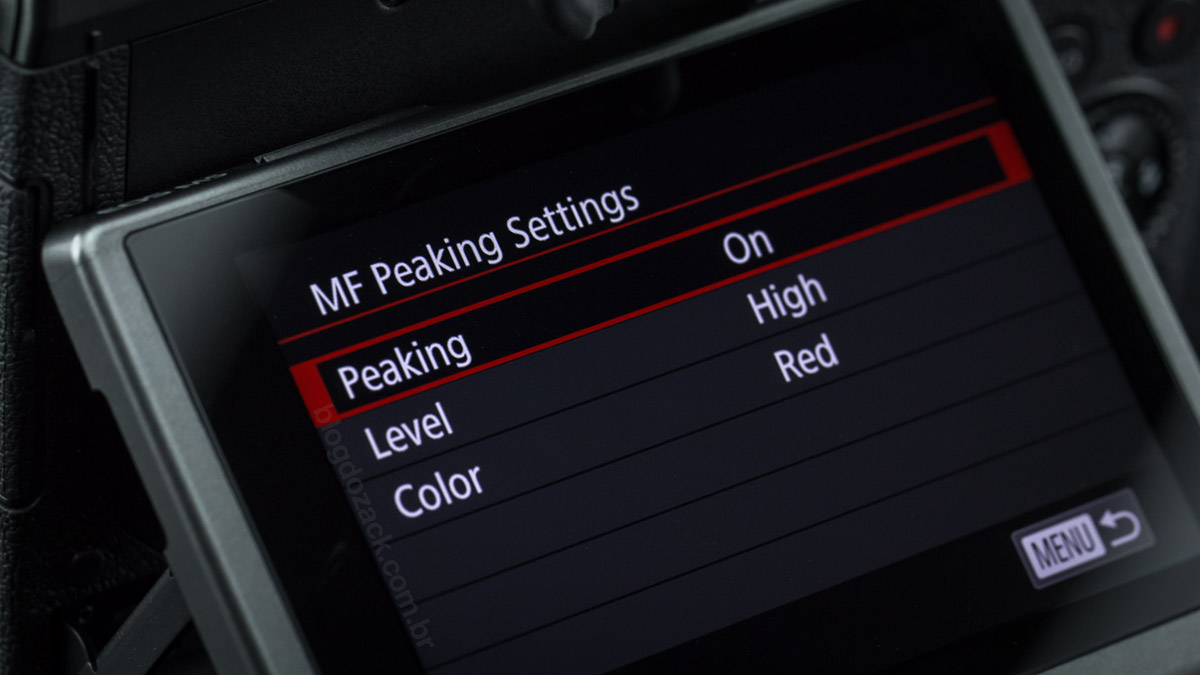
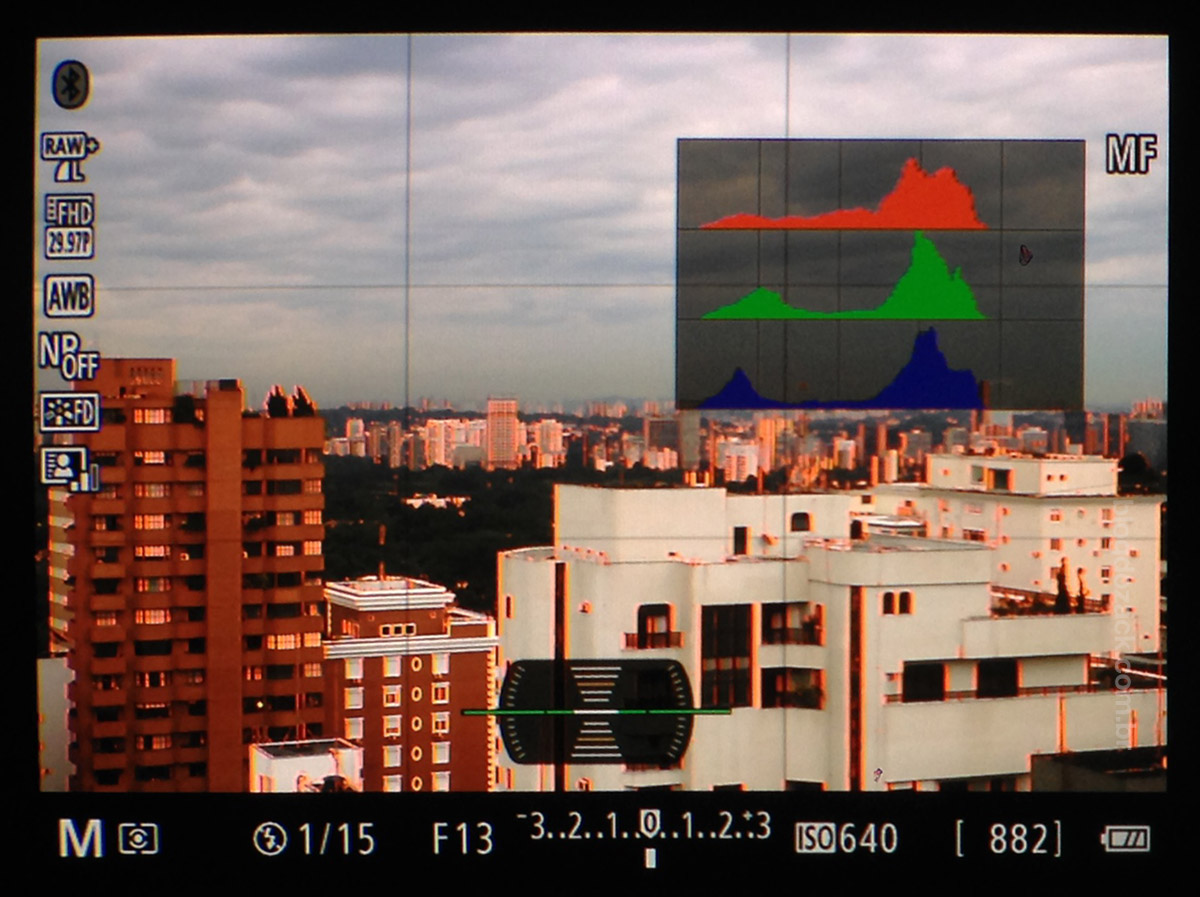
Also the M5 is the first EOS to sport a built-in stabilizer; sort off. Canon is introducing a new “Digital IS” mode, sensitive to 5-axis (2D roll + 3D pitch) using the extra 25.8MP pixels from the 24.2MP sensor to compensate for camera shake, rendering a stabilized 1920×1080 using the DIGIC7. Compatible with native IS lenses, non-IS lenses (like adapted primes) and optimized for EF-M lenses (18-150mm and 15-45mm), while Canon refuse to rate it at “x-stops”, the Digital IS is quite impressive. Here shown with the EF-S 18-135mm f/3.5-5.6 IS NANO USM, it honestly feels like one of the “optimized” lenses: the hand-held videos are so steady it feels shot using a tripod, also with almost no noticeable artifacts (image wobbling or random clicking). Also there’s almost no area crop with the Digital IS ON/OFF, and Canon indeed designed a new sensor for the EOS M5 (not recycled from the 80D); it definitely says 25.8MP on the camera’s box.
(IMHO) And, as always, that brings us to the question: can I recommend it for videos? Nope, not at all. While the portable EOS M “platform” would be great to attach to a drone or motorized gimbal, or even keep it in our kits as a backup camera, it doesn’t make any sense to pay for its size, given the software limitations; nor the poor 1080P resolution, acquired via line skipping. What Canon did with the Dual Pixel, on the M5, and that is NOTHING, makes much better sense to pay (less) for the same thing on the also DIGIC7 EOS T7i. While the new processor is put to good use fixing image artifacts (moiré and aliasing), it’s hard to swallow the Canon’s M5 performance when the 4K-wonder Sony A6300 is cheaper than the EOS (although it’s prone to over-heating). Under any optic, no pun-intended, the EOS M5 is not a worthy alternative to capture videos; not in 2017.

And it’s not only the video functions that comes limited on the EOS M5. Coming from a strictly professional background, where I work with an EOS 5DS and already used Canon’s most recent cameras (5D Mark IV, 80D), the M series software limitations are bizarre to say the least; in spite of sharing the same overall hardware/electronics. On the M5 there’s no “Color space: Adobe RGB” (there was on the classic 2011 M); no “Highlights tone priority”, using the ISO200 dynamic range to save the highlights on high contrast scenes; no BULB timer; no “Silent shooting”… But what annoyed me the most was the lack of wireless options on the “Flash Control” menu, to use the integrated flash as a commander. Are these limitations imposed not to canibalize DSLR sales? Or a way to simplify the amateurs experience? These limitations makes me not want to keep it in my kit.

Finally the M5 brings new options to Canon’s EOS wireless connectivity. If I thought the 5D Mark IV was incredibly flexible for its Wi-Fi + NFC + GPS antennas, it is truly impressive that Canon could implement an even better option: the Low-energy Bluetooth. Those who have used an EOS camera know how unstable the wireless connection can be: it’s hard to setup, it drops constantly and the battery life is greatly reduced. If it all works, it’s incredibly useful to free the camera around the studio, or to simply share a file directly to a compatible smart device (or even a remote server on the 5D IV). When I used it for the first time on the 2013 EOS 6D, it was revolutionary in the studio: I could leave an iPad on the client ’s hands, while wirelessly sending the captured shots in real time. But I was well aware of the issues: any camera boot and the setup could be completely lost.

On the EOS M5, the Bluetooth offers an always-ON connection with the smart device, with a single setup. And with support for the new BT-LE (low-energy), there’s almost no impact in battery life. It works like this: straight into Canon’s Camera Connect app (for iOS and Android), the EOS M5 pops-up. You select the camera and it instantly pairs; no passwords nor SSID required; it’s all Bluetooth. Then, if needed, the app guides you to the older Wi-Fi setup: it offers a copy/paste password to connect to the camera’s own Ad-Hoc network, and automatically switches you to the smart-device wireless setup, where you paste the code. And that’s it. Both devices stay connected via Bluetooth.
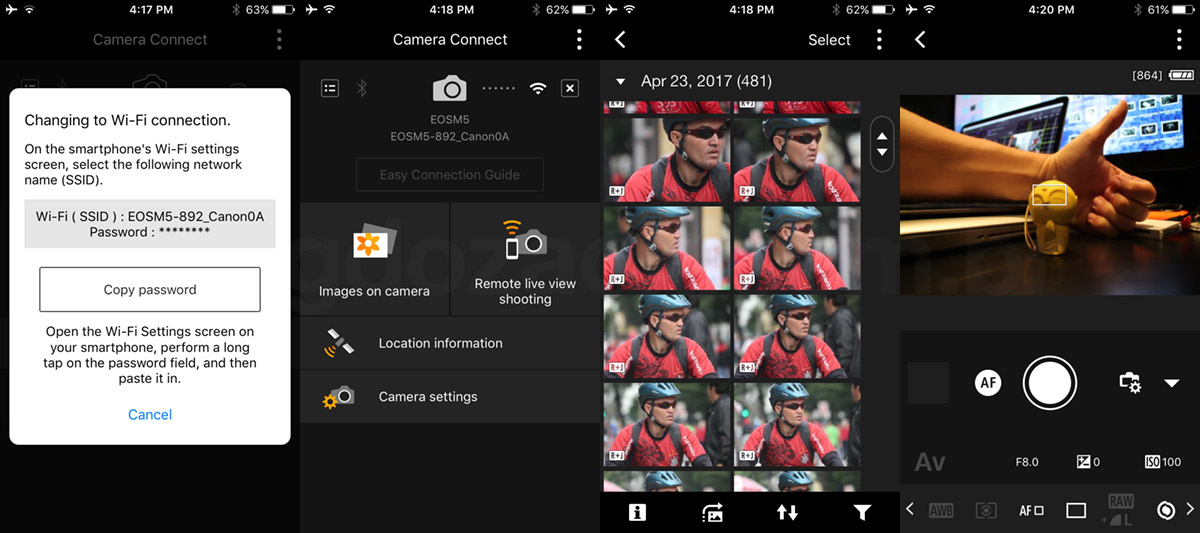
For simpler functions, like geotagging using the smartphone GPS data or a simple shutter release remote control, the EOS M5 uses the low-energy Bluetooth. And for wider bandwidth data, like the wireless Live View or to download the photos, the EOS M5 automatically switches to Wi-Fi. The new “Bluetooth remote control” controls even the picture playback, simplified compared to the full Live View mode, but consuming way less battery power. And the “Remote live view shooting” is the same as before, with total control over focusing area, exposure, and even the image sensor wireless preview; although I didn’t find any of the video recording from the 5D Mark IV (but it’s present as a simple REC button on the simplified Bluetooth remote control). Canon has the market’s most comprehensive wireless camera controls, something I barely mention on other brand’s reviews.
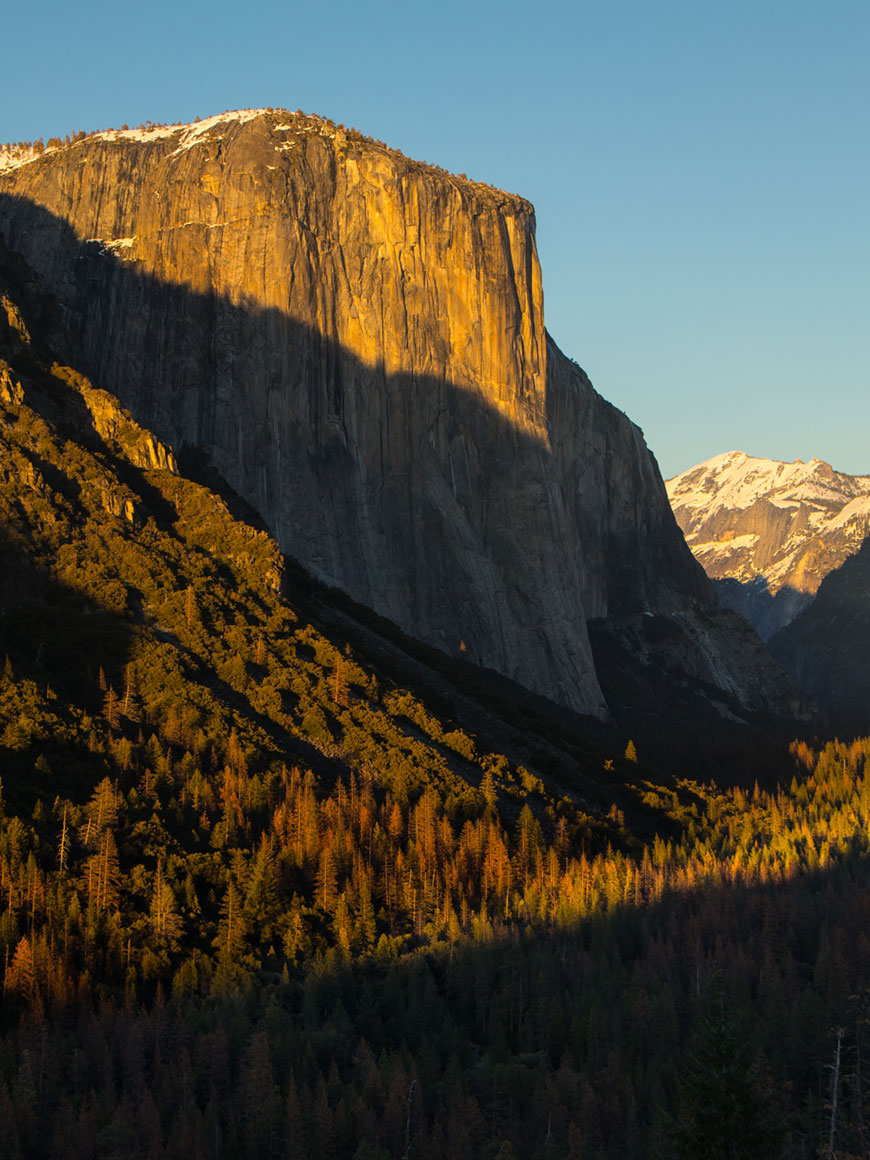
“El Captain” with the EF-S 18-135mm f/3.5-5.6 IS USM at f/6.3 1/250 ISO100 @ 42mm; all photos with the EOS M5. Raw files available at Patreon.
With a brand new 25.8MP APS-C CMOS sensor, 1.6MP used for the new Digital IS and the rest 24.2MP used for pictures, the EOS M5 offers about the same image performance as the EOS 80D, including the immense 6000×4000 pixel files; ready for high quality prints. The highlight goes to the new on-chip ADC, that enhances the sensor readout and reduces temperature, thus generating cleaner high-ISO file, with a visible 1-stop advantage over Canon’s past generation APS-Cs. And in practice the overall performance is excellent: plenty of resolution from base ISOs up to reasonably higher ones; enough highlight and shadow recovery from raw files, with visible gain in noise; “organic” noise at higher ISOs (above 4000); and saturated colors from raw files, after minor software adjustments. The in-camera JPEG engine also got revamped with the DIGIC7, although it still looks aggressive towards the noise suppression, washing away some finer details; hard to recommend it for the best results. The EOS M5 has the same qualities of recent EOS APS-C DSLRs (T6i, T6s, T7i, 77D, 80D), despite the diminute size and simplified operation.

“Mata” with the EF-S 18-135mm f/3.5-5.6 IS USM at f/6.3 1/200 ISO800 @ 135mm.
Here tested with the EF-S 18-135mm f/3.5-5.6 IS USM, a standard-zoom lens thought for flexibility and far from optical perfection, we notice the perverse logic in most modern APS-C camera: only the best lenses takes full advantage of so many megapixels, and they usually cost more than the camera itself. It’s amazing to see the details on landscapes, textures and the skin makeup on portraits at base-ISO, perfect for large format printing (1.5x1m at 100ppi), way ahead what’s possible from most smartphones (that stopped at the 12MP) and it’s minuscule optics. The M5 is a compact camera ready to compete with larger CMOS sensors, and it impresses for its colors, contrast and smooth output; as long as you pair it with top-of-the-line lenses.

100% crop, the 24MP resolution can finely render rock textures.

100% crop, this zoom lens can’t match the EOS M5 optical resolution.
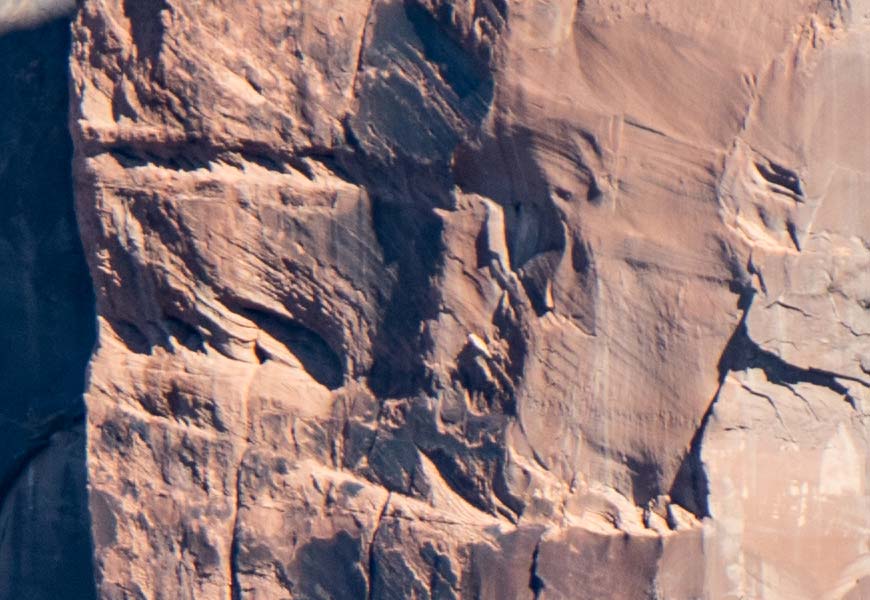
100% crop, giant files allow for large format printing, faithfully rendering reality.

100% crop, plenty of details from the EOS M5 sensor.
“Grand Canyon” with the EF-S 18-135mm f/3.5-5.6 IS USM at f/7.1 1/60 ISO100 @ 18mm.The EOS M5 dynamic range allows for reasonable +3 stops of compensations before loosing color quality; the same performance from the larger 80D. While Canon yet can’t match Sony’s impressive APS-C capabilities, itself far from full frame quality but with a full +4 stop shadow recovery, the EOS M5 performance is more than enough to deal with real-life exposures; or to fix most exposure errors. Just as any recently tested APS-C (X-Pro 2, X-T2, A6300, A6500, T6i, 80D, D500), color noise is added in every shadow recovery, that can’t even compete with two-generations old full frames (the 2013 D800E is a good example); although it’s a giant leap forward for Canon’s APS-C. We just don’t see issues with purple shadows and banding, and the color fidelity is great out of the camera.
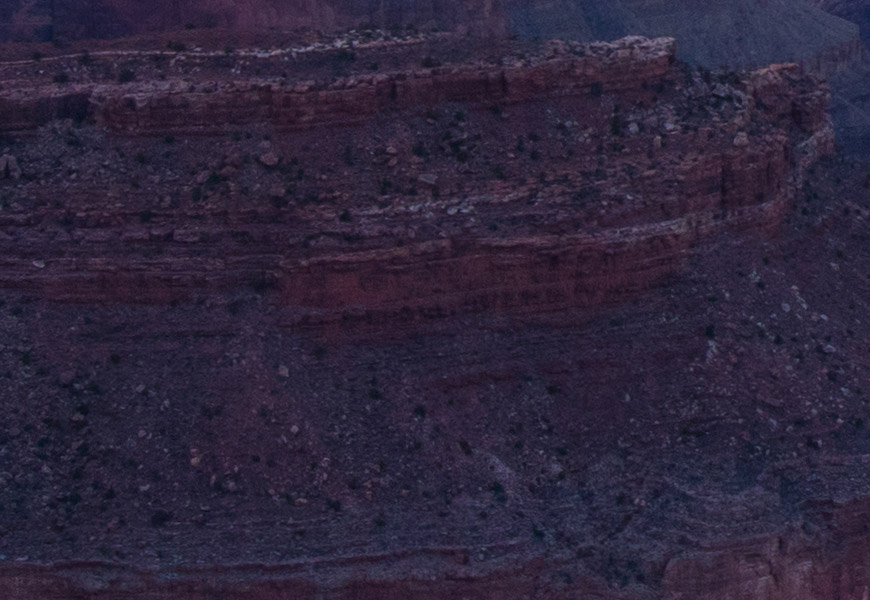
100% crop, a few visible noise footprint on software recovered shadows.
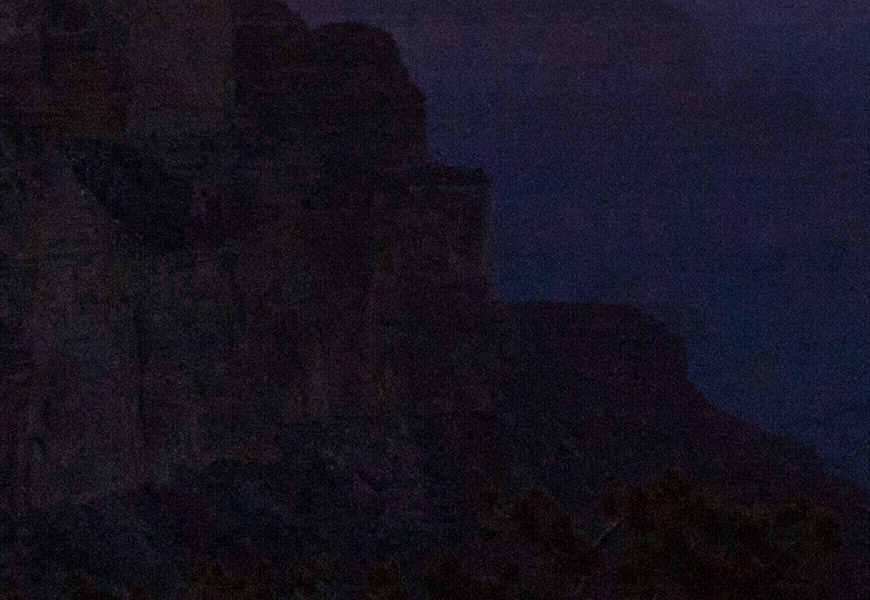
100% crop, visible noise added in much darker shadow recovery.
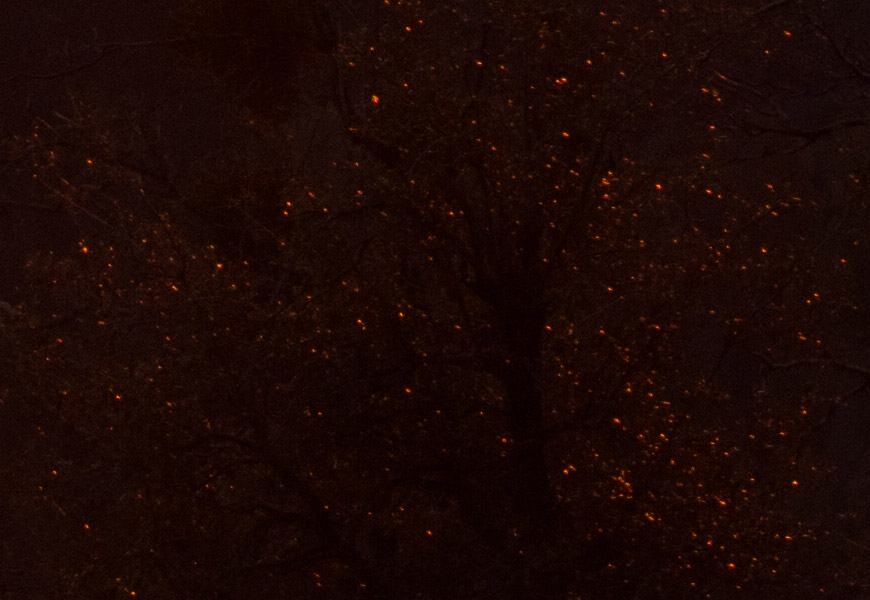
100% crop, the detailing over a shadowy area, on a light software compensation.

100% crop, preserved details on a shadow area.
The M5 high-ISO performance is interesting: sometimes better than Sony’s A6500, sometimes worse. It’s impressive “when” these difference are seen: only above ISO6400, that’s already absurd for any high quality output. Up to ISO3200 the noise profile is visible on any file, but at least the details and colors are retained on the M5; practically the same performance offered from full frame camera’s a few years ago. It’s very easy to work with f/3.5-5.6 lenses pushing the ISO under low-light situations. When that happens, the M5 is not bad at all: the noise is practically gone in every “web output”, downsizing to fit mobile screens; or it mix perfectly with the paper’s own texture, after most prints. What’s interesting to see is the color output even under low-light exposures, that always looks gorgeous on Canon’s Digital EOS color science system.
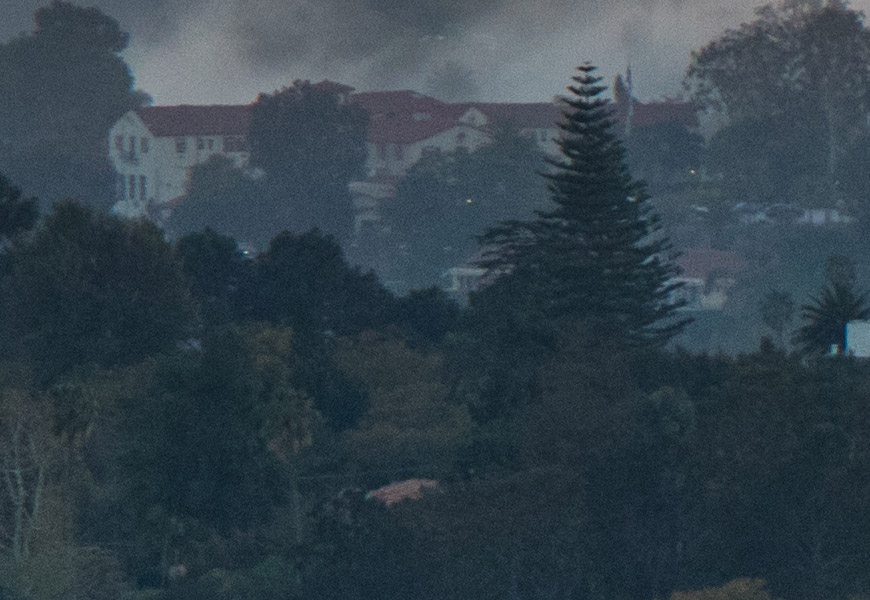
100% crop, CMOS standard smooth noise profiles, with perfect detail reproduction.

100% crop, visible noise at ISO800, under a shadowy area.

100% crop, fine details starts to compete with the shadow profile.
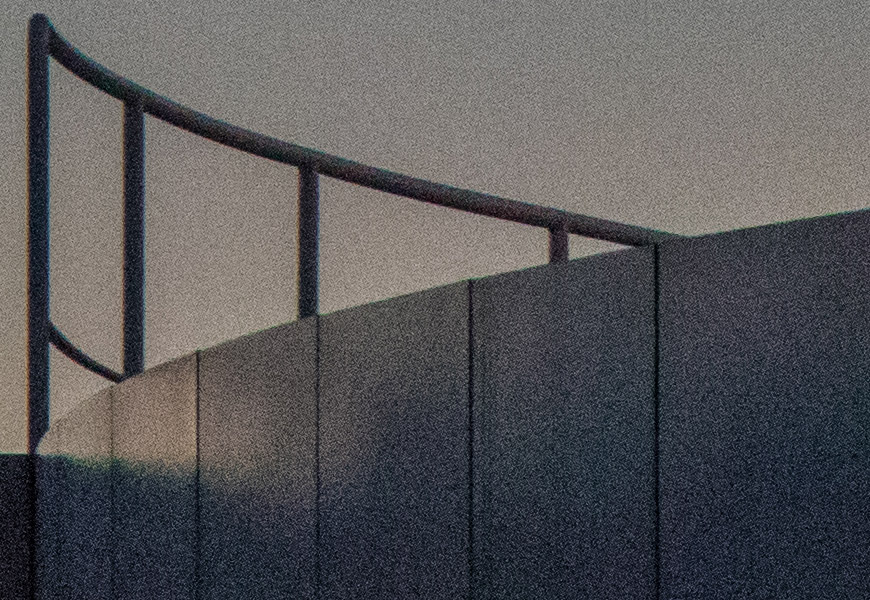
100% crop, obvious noise profile, but the real world colors are intact.
EOS’s color science is intact on the M5. Canon has been borrowing some 1” Sony chips on the Powershot G7X, with disastrous color performance: gone is the yellow palette, and strong blues and greens makes the picture look like video screen-grabs hues. But the M5 gets a new 25.8MP Dual Pixel Canon made APS-C CMOS sensor, and once again we get a visibly more saturated album from a blog do zack’s review; distinct among various reviews. Although largely dependent on the photographers post-processing, the color feels “dense” with large blocks filled with smooth gradients, not clipping any RGB channel nor destroying details, giving new meaning to mundane shots; otherwise “muted” by smartphone cameras. It’s possible to over saturate files and retain surface textures, not looking smeared. Skin tones are also greatly maintained from other EOS cameras, matching high performance lenses for high-quality outputs, great to keep the M5 as a backup. When paired with adapted L-series lenses, the color performance is identical to full frame cameras.

“Tiki” with the EF-S 18-135mm f/3.5-5.6 IS USM at f/5.6 1/800 ISO100 @ 27mm.
100% crop, notice how the JPEG engine “hides” the details as soon as ISO100. 100% crop, a sharper file from the raw processing. 100% crop, despite the noise reduction turned off, the DIGIC7 JPEGs are way too “clean”. 100% crop, the raw processing is infinitely better than the EOS M5 JPEG engine.Finally the JPEG engine takes advantage of the new DIGIC7 processor. But to put it bluntly, both Sony A6500 and Fuji X cameras have much better JPEG output than the M5. Sony’s BIONZ X files are so sharp they feel coming from a low-pass-less camera, and Fuji excellent “Film Simulation” make its photos ready to print. But Canon’s DIGIC7 still fails to keep the details even at base-ISO (100-400), with large color blocks lacking textures; hides even more details at higher ISOs (800-3200), no matter it the noise reduction is OFF; and renders overall “muted” colors, begging for some post-processing boots prior to publishing. On the other hand, the DIGIC7 cleverly deals with diffraction: even f/11 shots look sharp from the camera’s JPEG, almost at the same level of Adobe’s +50 sharpness in ACR/LR. For the best results overall, I always recommend shooting raw.
The EOS M5 review was the most frustrating ever on the history of vlog do zack. A camera I’d love to recommend, Canon fails to deliver the very minimum and won’t dare to compete with it’s own DSLR lineup; purposefully crippling the M5. We’re not asking for much: “- Another Dual Pixel camera now with DIGIC7 and up to 9 frames per second, and costing almost US$1000? It’s must be better than all cameras before it, right?” Wrong. The M5 build is hard to swallow after the all-metals Ms and, compared to DSLRs that use a lot of plastics (T6i/80D), they’re infinitely better put together. Next to a Sony A6300, now cheaper than the M5, Canon’s premium price looks ridiculous just for the portable footprint. The control offering is flexible and easy to use, de facto the closest we will get for a micro-DSLR mirrorless, and Canon even categorizes it that way. But some software settings, like the Dual Pixel focusing speed for videos or wireless flash, are inexplicably absent, proof Canon doesn’t want any competition for the EOS 80D or the EOS Rebel T7i; it wants a mirrorless camera to extort money from those wishing for a portable EOS.
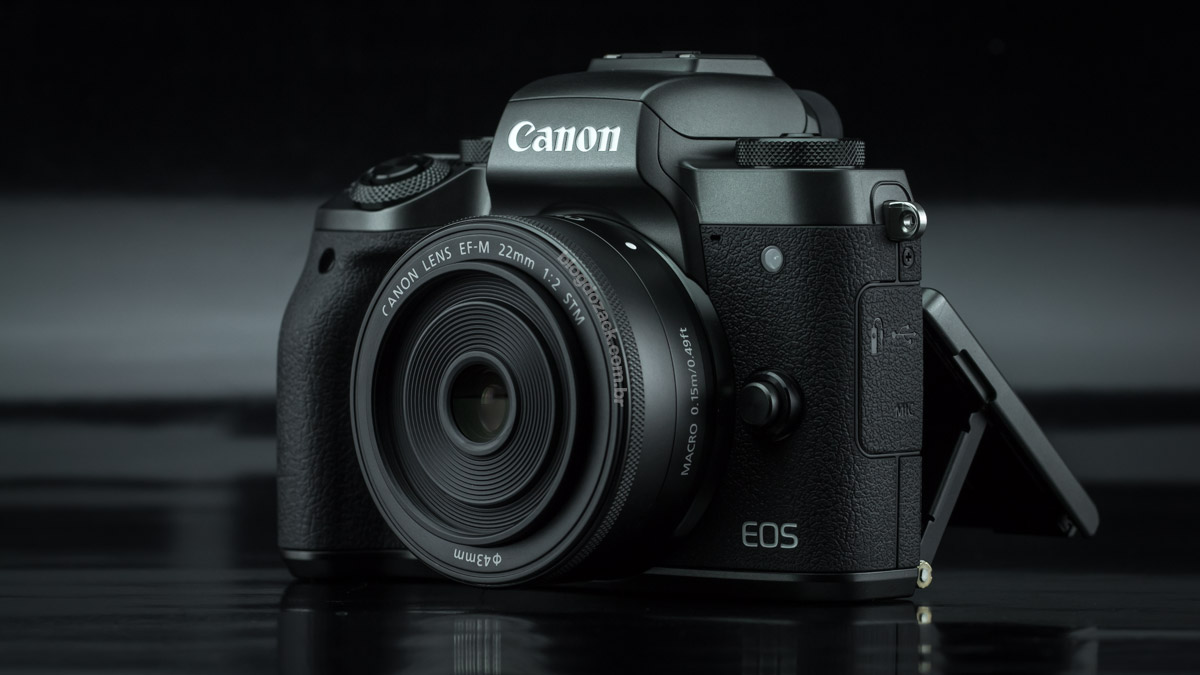
While the LCD screen is fantastic with fluid touch controls and pixel-perfect sharpness, the first OLED EVF on an EOS camera let us down. It’s too small, too colorful, too uncomfortable… Again, inexplicable compared to the rest of the market that probably shares the same tech. And although it leads the mirrorless market in single-point AF performance, the DIGIC7 EOS M5 works worse than the DIGIC6+ EOS 5D Mark IV in Live View, miserable failing to track moving subjects. For those interested in video, it’s been a while since I recommended a Canon camera, and the EOS M5 keeps that hiatus. Its FullHD video is usable for some web outputs where nobody will care about the lack of resolution, and the new processor finally fixes most of the moiré and aliasing from past APS-Cs. For God sakes, for the first time we get a full peaking manual focusing assistant, but loose EVERY Dual Pixel adjustment is atrocious. To do what the M5 does, it didn’t need to be Dual Pixel.
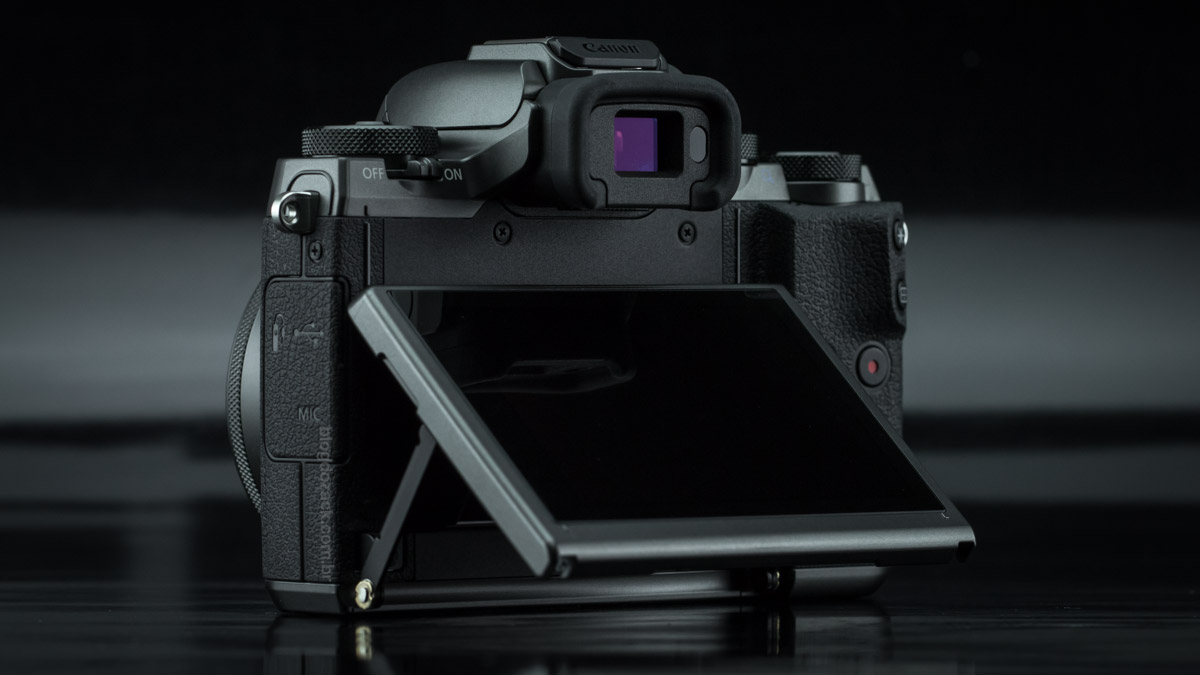
The image quality is a generous move from Canon’s APS-C, still not competing with older than two-generations full frames, something most brands already do. While I can’t complain about it’s resolution (depending on the lens used), the dynamic range nor high-ISO noise profile, the poor straight-out-of-camera JPEGs looks like a joke. Fuji’s brilliant X-Trans III 24MP APS-C are OLPF-less, have great color dynamic and feature film simulations; all superior to the M5. Sony’s A6300/A6500 24MP EXMOR APS-C with copper wiring shows greater dynamic range and colors similar to Canon’s. And the BIONZ X JPEG engine also looks sharper and is smarter at preserving details than the M5 DIGIC7. Hey, Canon, where is the new DLO Digital Lens Optimizer found on the DIGIC6+ 5D Mark IV?

And finally on the last paragraph, I still haven’t mention the M5 native lens selection. Yes, it’s a genuine “Canon EOS”, but it can’t accept EF/EF-S lenses; it uses the smaller EF-M mount that today, may 2017, five years (!) after its launch, is limited to only seven models: five zoom, all with small, variable apertures; and only two prime, one of them a macro! And some people complain about Sony’s E-mount lack of options… To use a DSLR lens on the M5 you must pay unbelievable US$199 for the adapter, a price that varies accordingly to Canon’s mood: it was US$199 at launch, back in 2012; I paid US$99 for it in 2014; it was as little as US$49 when Canon abandoned the M2 in the Americas; but now it costs US$199 again! A US$949 M5 + US$199 adapter is more expensive than the US$1178 80D. More expensive than the 77D. More expensive than the T7i… If I would recommend the M5 to anyone? Nope. If it found a place in my kit? Not at all.